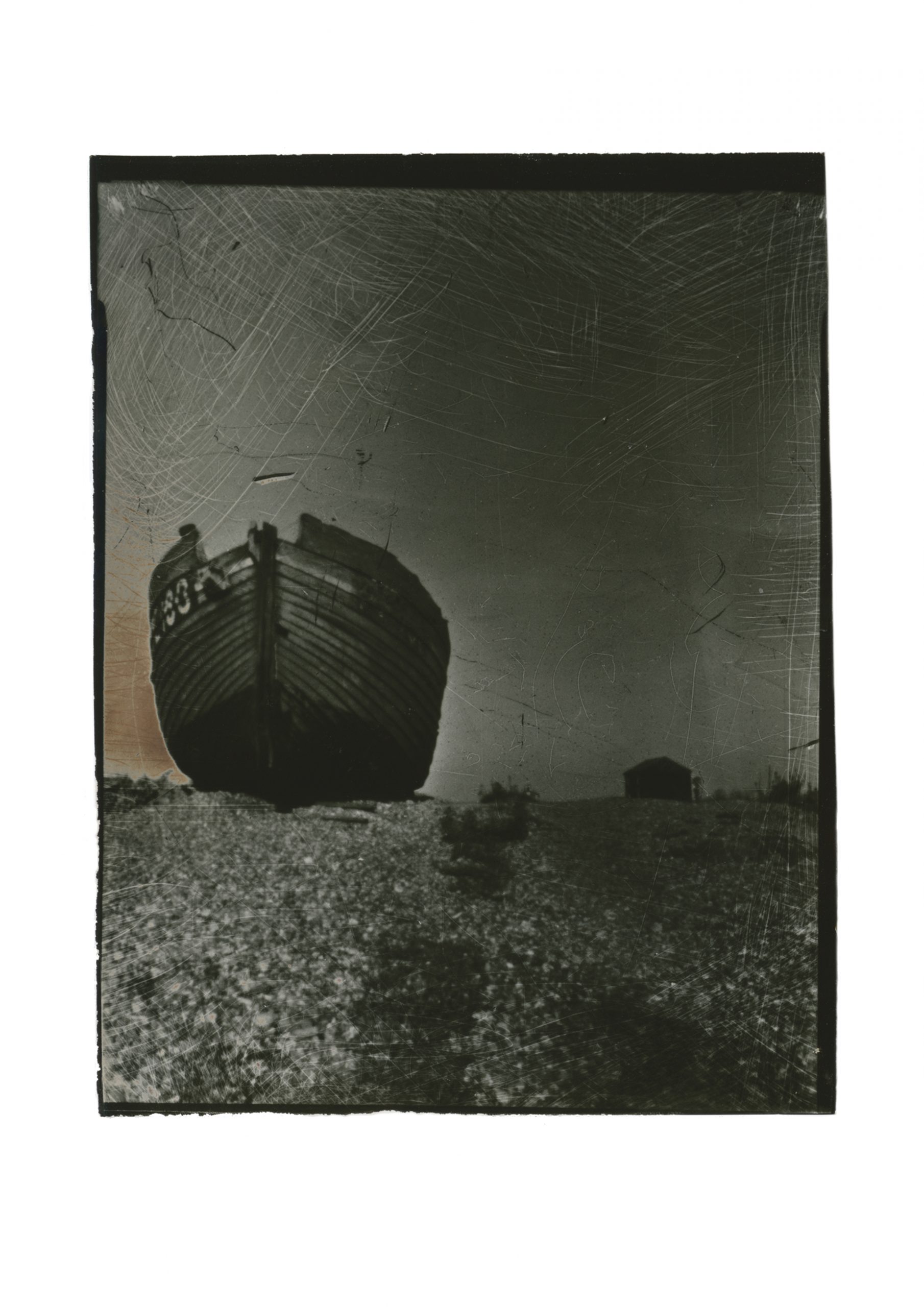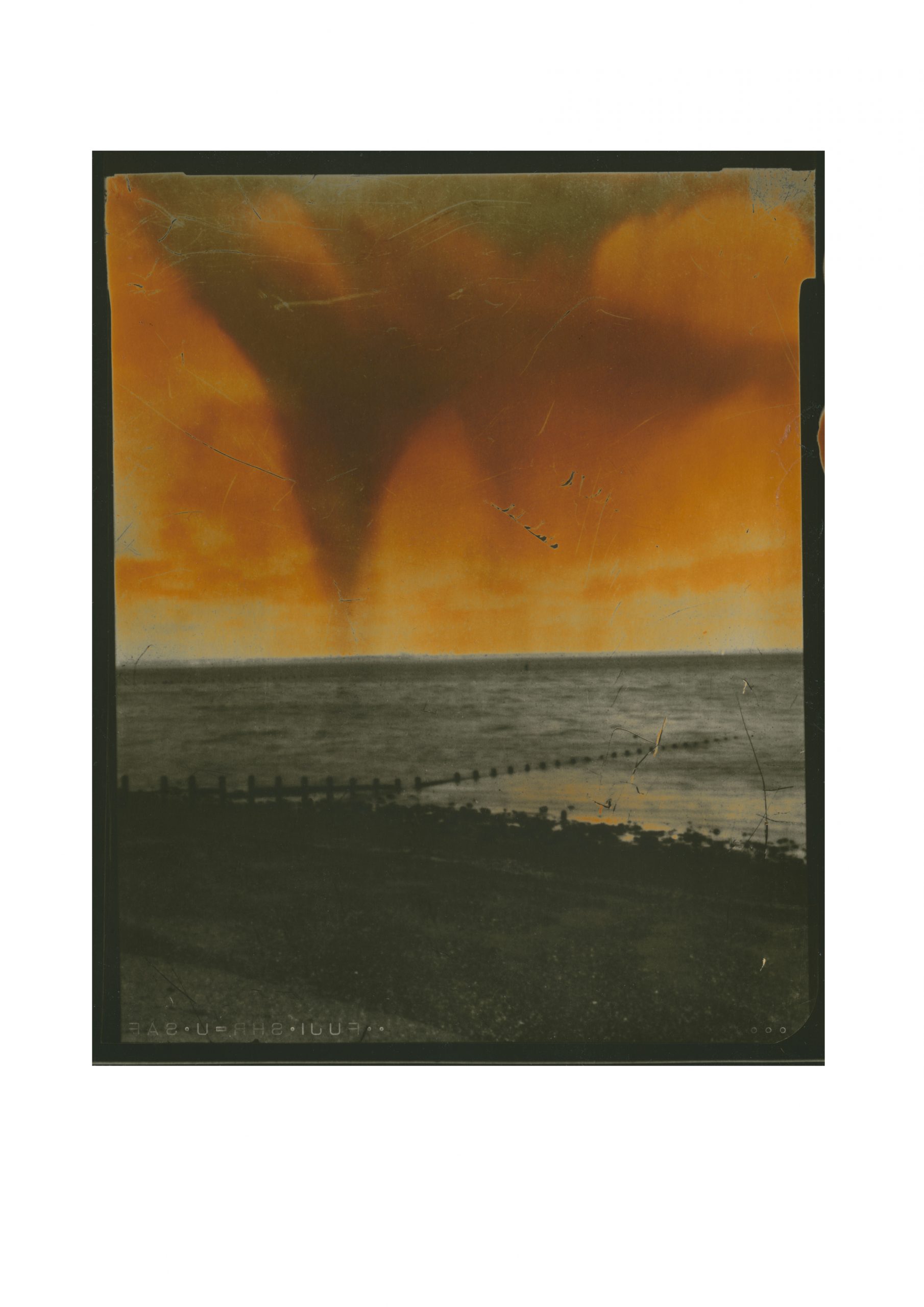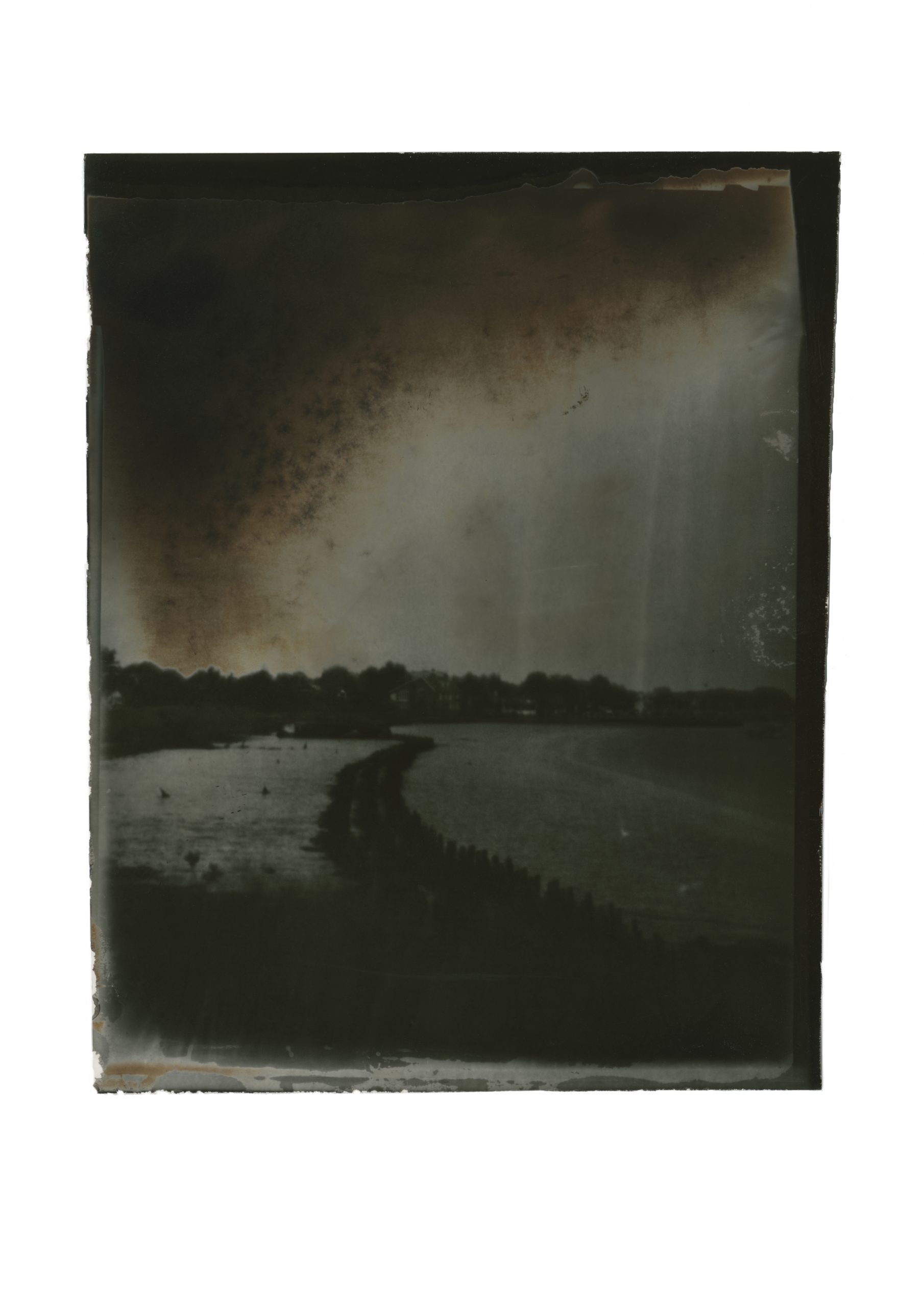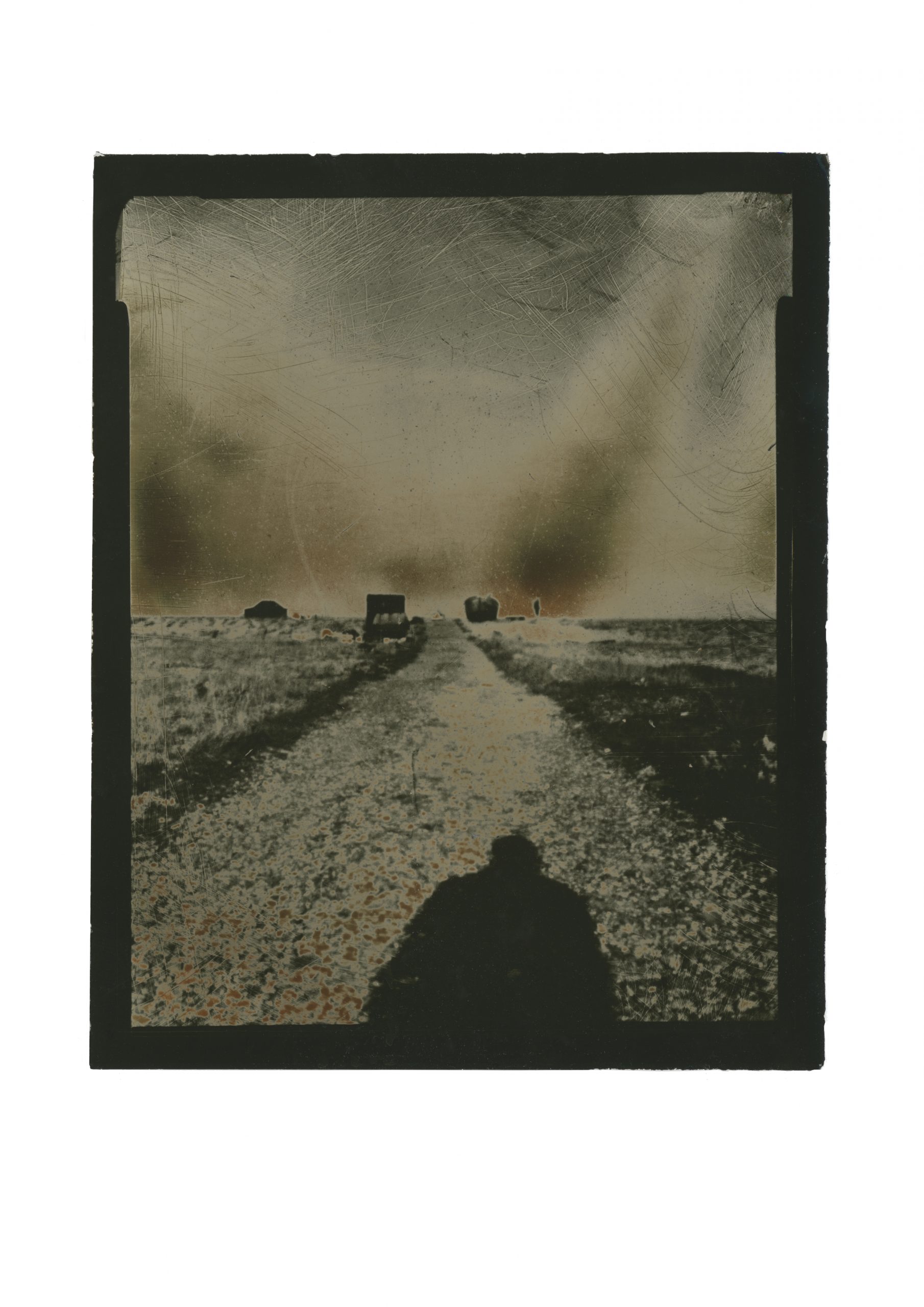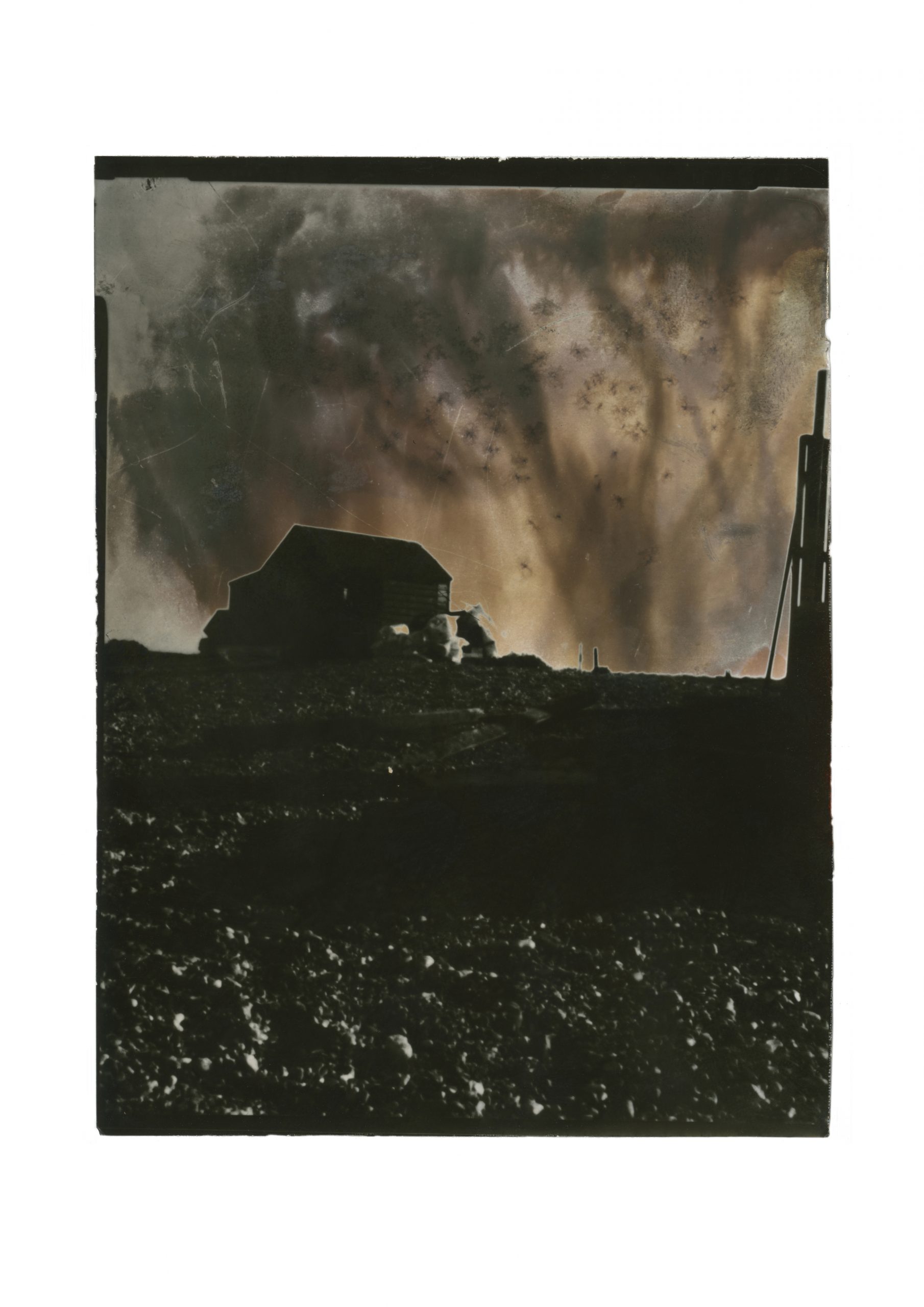
I am delighted to have this project in the making accepted to the Offo Pinhole Festival for 2021, due to the current global pandemic the work will also be displayed here just in case galleries are unable to open to the public.

“Ness” was first started in 2019 it is a work in progress, born out of my connection both historical and emotional to these places. My response to these environments is more than just captured in a slow pinhole photograph, I have painted using light and chemicals the surface of these contact printed 4″x5″ X-ray film shots, the surfaces are scratched, marked with actions and the essence of the land they were made in. Using these materials brought a challenge and materiality to the project. The tactile nature of these images is reflected in the marks upon the surface of each image, their history of making recorded on film and in print. The scratches acquired from exposure to fine elements of sand, dust and mud and the deliberate ‘scarring’ of the surface to create an emotive response.
This project I hope will explore key areas with the common connection of “Ness” with its derivation in Old English and Old Norse in the South East of England it means a promontory or headland jutting into a body of water; exposed, often drowned and always at the mercy of the weather. I wanted to highlight these areas around the Thames Estuary and the South East coast, places I have memories of: Sheerness, Shellness, Shoeburyness, Foulness, Orford Ness and Dungeness. These landscapes have a brooding familiarity and many connections beyond the personal; I am the common element along with the suffix- ‘Ness’. This work in progress will eventually convey a story of the Estuary and the southern coast of England both as a record of memories that are held close to the heart and filled with history.
Technically Ness is made with a serendipitous process, I use a 4×5 pinhole camera, an Intrepid with a pinhole board of f280 using X-Ray film rated at 100ASA or paper negatives rated at 3ASA and I load up a lot of double dark slides so I can just make the images when needed and not have to worry about using a changing bag out in the field unless I have exceeded the pre loaded count. Setting up is easy, carrying my tripod and camera ready to go when I see something that my gut reacts to.
Sheerness is my childhood hometown, consequently the work made here probably has the most emotional resonance. The stories associated with the places captured here have an importance to me that reflects my relationship with the land and family, memories, nostalgia and history. The main town on the island which exudes more history than is apparent from its jaded seaside appearance boasts remnants of a napoleonic fort, a key historic dockyard and an extensive sea wall protecting the town from yet more flooding.
Shellness further up the coast on the island is a desolate place a landscape of peace, solitude somewhere to breathe and think. It is low lying bordered by a sea wall of sorts, one side a beach of shells the crunch under foot breaking the silence, the other side of the bank lie boggy fields there flatness punctuated by some low trees and telegraph poles.
Shoeburyness and Foulness are geographically north from Sheerness beach across the expanse of the Thames Estuary they make themselves known to Islanders by the resounding booms from the military use which rattles the windows in their frames. As a child I would always wonder what was happening until told it was munitions testing. Access to these areas are both restricted and difficult and dependent also on the conditions of the local topography. Walking The Broomway is not to be done without extreme caution and certainly good timing and even a guide. The tide is quicker than you think.
Orford Ness, is another outlying low level sea consumed area with a history which has a similar military interest, again only accessible at certain times of the year and now under the care of The National Trust. One can of course stay on the mainland and capture the land beyond the water from the coastal path just outside of the small town.
Dungeness, last but far from least, here my connections to this desolate and very special nature reserve go back to my love of this brooding landscape and its associations with the late artist and filmmaker Derek Jarman, commissioned in the early 90’s to make work at Prospect Cottage for a private press book I grew to love the openness, the wide vistas the unforgiving wind and the silence. Here too there is a military connection but the contrast of nature and the malevolence that is the Nuclear power station is palpable as it dominates the flat lands, visible for miles around.
